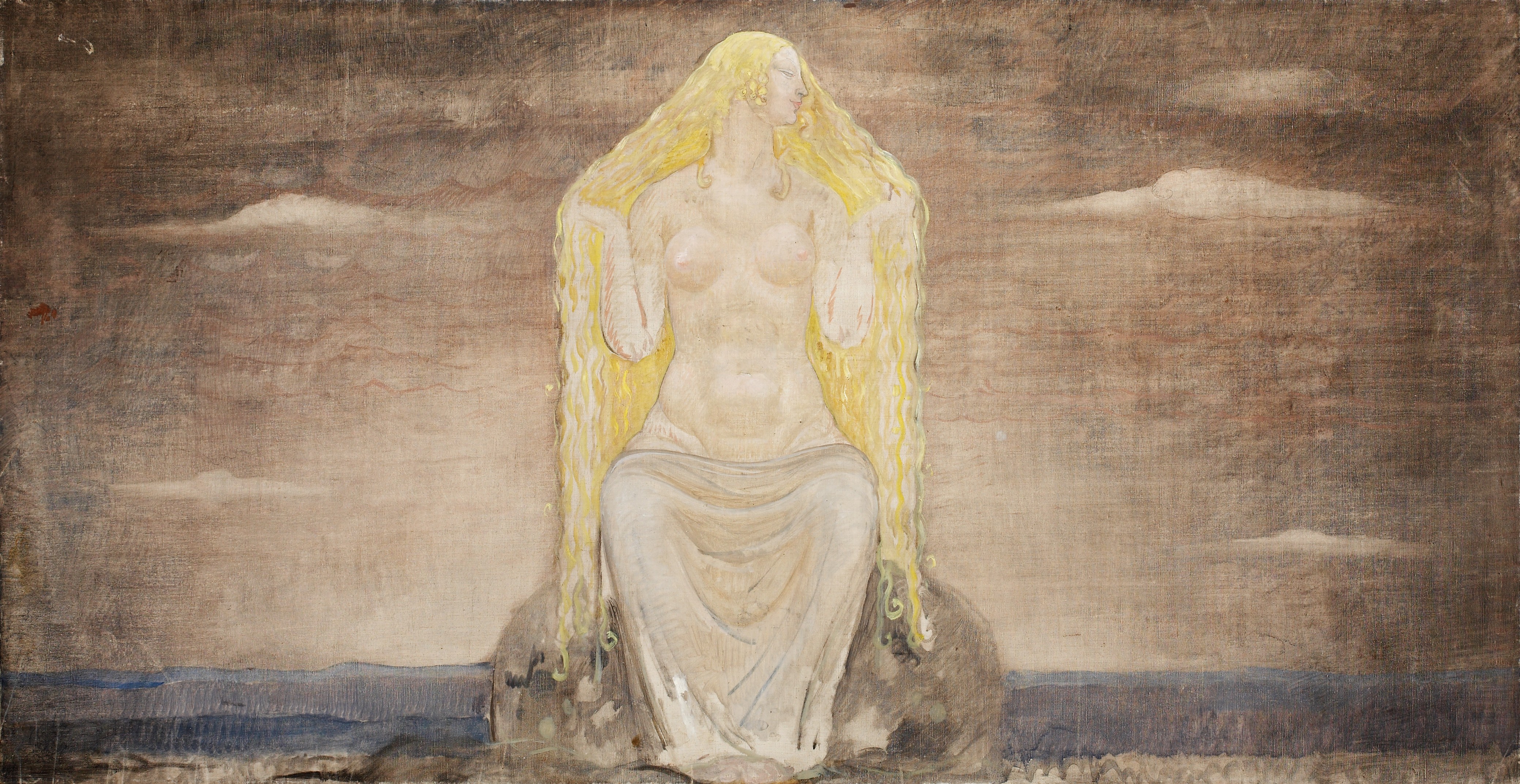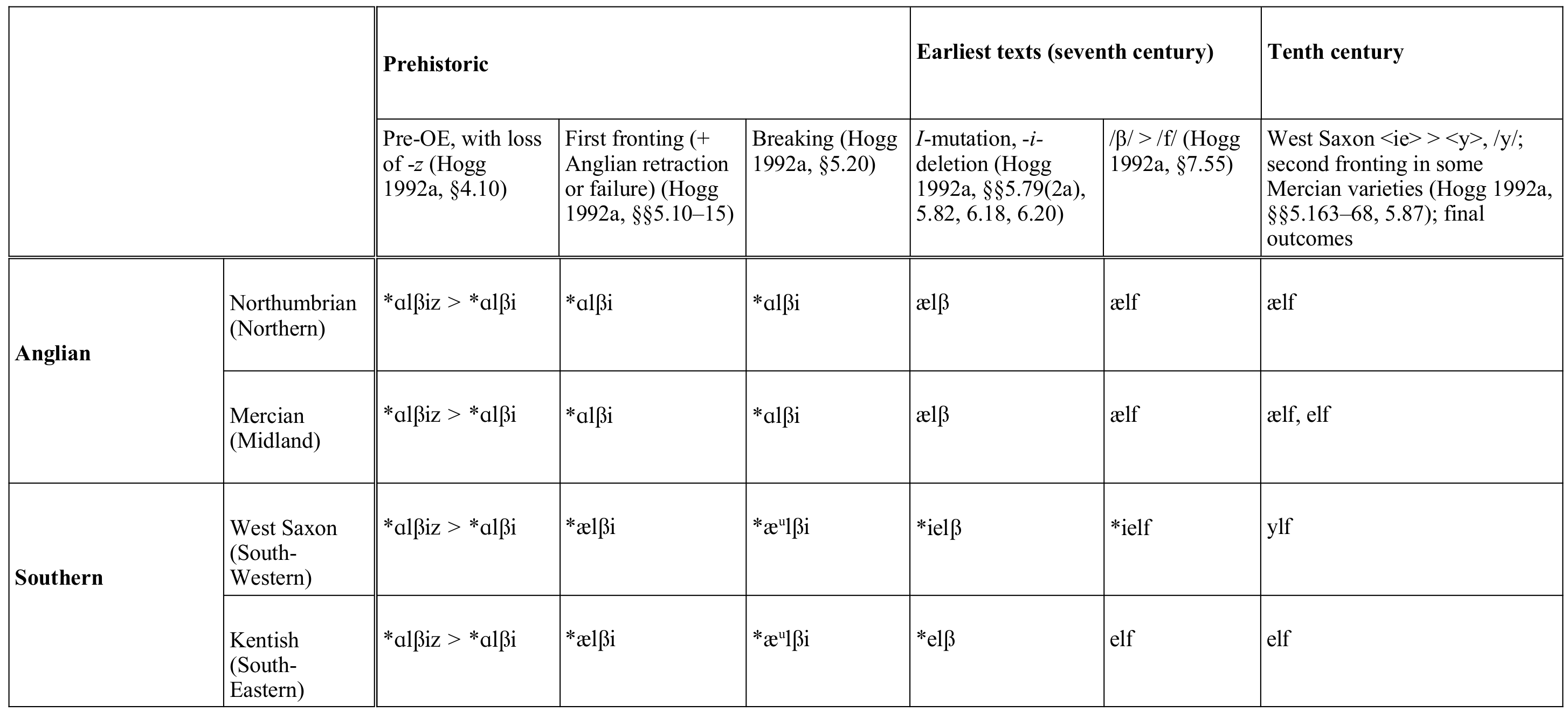|
Æsir
├åsir (Old Norse; singular: ) or ─ōse (Old English; singular: ) are deities, gods in Germanic paganism. In Old Nordic religion and Nordic mythology, mythology, the precise meaning of the term "" is debated, as it can refer either to the gods in general or specifically to one of the main families of gods, in contrast to the Vanir, with whom the ├åsir ├åsirŌĆōVanir War, waged war, ultimately leading to a joining of the families. The term can further be applied to local gods that were believed to live in specific features in the landscape - such as fells. The Old English medical text Wi├░ f├”rstice refers to the ─Æse, along with elves, as harmful beings that could cause a stabbing pain, although exactly how they were conceived of by the author of the text is unclear. and its cognate forms feature in many Germanic names, such as Oswald (given name), Oswald and , and in some place-names in Norway and Sweden. The ├åsir further likely give their name to the Ansuz (rune), A-rune, atte ... [...More Info...] [...Related Items...] OR: [Wikipedia] [Google] [Baidu] |
Vanir
In Norse mythology, the Vanir (; Old Norse:, singular Vanr) are a group of gods associated with fertility, wisdom, and the ability to see the future. The Vanir are one of two groups of gods (the other being the ├åsir) and are the namesake of the location Vanaheimr (Old Norse "Home of the Vanir"). After the ├åsirŌĆōVanir War, the Vanir became a subgroup of the ├åsir. Subsequently, at least some members of the Vanir are at times also referred to as being ├åsir. The Vanir are attested in the ''Poetic Edda'', compiled in the 13th century from earlier traditional sources; the ''Prose Edda'' and ''Heimskringla'', both written in the 13th century by Snorri Sturluson; and in the poetry of skalds. The Vanir are only attested in these Old Norse sources. All sources describe the god Nj├Čr├░r, and his children Freyr and Freyja as members of the Vanir. A euhemerism, euhemerized prose account in ''Heimskringla'' adds that Sister-wife of Nj├Čr├░r, Nj├Čr├░r's sisterŌĆöwhose name is not providedŌ ... [...More Info...] [...Related Items...] OR: [Wikipedia] [Google] [Baidu] |
├åsirŌĆōVanir War
In Norse mythology, the ├åsirŌĆōVanir War was a conflict between two groups of deities that ultimately resulted in the unification of the ├åsir and the Vanir into a single Pantheon (religion), pantheon. The war is an important event in Norse mythology, and the implications for the potential historicity surrounding accounts of the war are a matter of scholarly debate and discourse. Fragmented information about the war appears in surviving sources, including ''V├Člusp├Ī'', a poem collected in the ''Poetic Edda'' in the 13th century from earlier traditional sources; in the book ''Sk├Īldskaparm├Īl'' in the ''Prose Edda'', written or compiled in the 13th century by Snorri Sturluson; and in euhemerized form in the ''Ynglinga saga'' from ''Heimskringla'', also often considered to have been written by Snorri Sturluson in the 13th century. Attestations ''Poetic Edda'' In two stanzas of ''V├Člusp├Ī'', the war is recounted by a v├Člva (who refers to herself here in the third person) while ... [...More Info...] [...Related Items...] OR: [Wikipedia] [Google] [Baidu] |
Old Nordic Religion
Old Norse religion, also known as Norse paganism, is a branch of Germanic religion which developed during the Proto-Norse period, when the North Germanic peoples separated into distinct branches. It was replaced by Christianity and forgotten during the Christianisation of Scandinavia. Scholars reconstruct aspects of North Germanic Religion by historical linguistics, archaeology, toponymy, and records left by North Germanic peoples, such as runic inscriptions in the Younger Futhark, a distinctly North Germanic extension of the runic alphabet. Numerous Old Norse works dated to the 13th-century record Norse mythology, a component of North Germanic religion. Old Norse religion was polytheistic, entailing a belief in various gods and goddesses. These deities in Norse mythology were divided into two groups, the Æsir and the Vanir, who in some sources were said to have engaged in war until realizing that they were equally powerful. Among the most widespread deities were the go ... [...More Info...] [...Related Items...] OR: [Wikipedia] [Google] [Baidu] |
Deities
A deity or god is a supernatural being considered to be sacred and worthy of worship due to having authority over some aspect of the universe and/or life. The ''Oxford Dictionary of English'' defines ''deity'' as a God (male deity), god or goddess, or anything revered as divine. C. Scott Littleton defines a deity as "a being with powers greater than those of ordinary humans, but who interacts with humans, positively or negatively, in ways that carry humans to new Higher consciousness, levels of consciousness, beyond the grounded preoccupations of ordinary life". Religions can be categorized by how many deities they worship. Monotheism, Monotheistic religions accept only one deity (predominantly referred to as "God"), whereas Polytheism, polytheistic religions accept multiple deities. Henotheism, Henotheistic religions accept one God, supreme deity without denying other deities, considering them as aspects of the same divine principle. Nontheistic religions deny any supreme eter ... [...More Info...] [...Related Items...] OR: [Wikipedia] [Google] [Baidu] |
Elves
An elf (: elves) is a type of humanoid supernatural being in Germanic folklore. Elves appear especially in North Germanic mythology, being mentioned in the Icelandic ''Poetic Edda'' and the ''Prose Edda''. In medieval Germanic-speaking cultures, elves were thought of as beings with magical powers and supernatural beauty, ambivalent towards everyday people and capable of either helping or hindering them. Beliefs varied considerably over time and space and flourished in both pre-Christian and Christian cultures. The word ''elf'' is found throughout the Germanic languages. It seems originally to have meant 'white being'. However, reconstructing the early concept depends largely on texts written by Christians, in Old and Middle English, medieval German, and Old Norse. These associate elves variously with the gods of Norse mythology, with causing illness, with magic, and with beauty and seduction. After the medieval period, the word ''elf'' became less common throughout t ... [...More Info...] [...Related Items...] OR: [Wikipedia] [Google] [Baidu] |
Ansuz (rune)
Ansuz is the conventional name given to the ''a''- rune of the Elder Futhark, . The name is based on Proto-Germanic ''* ansuz'', denoting a deity belonging to the principal pantheon in Germanic paganism. The shape of the rune is likely from Neo-Etruscan ''a'' (), like Latin A ultimately from Phoenician aleph. Name In the Norwegian rune poem, ''├│ss'' is given a meaning of "estuary" while in the Anglo-Saxon one, takes the Latin meaning of "mouth". The Younger Futhark rune is transliterated as ''─ģ'' to distinguish it from the new ├Īr rune (ßøģ), which continues the '' j─ōran'' rune after loss of prevocalic ''*j-'' in Proto-Norse ''*j├Īr'' (Old Saxon ). Since the name of ''a'' is attested in the Gothic alphabet as or , the common Germanic name of the rune may thus either have been ''*ansuz'' "god", or ''*ahsam'' "ear (of wheat)". Development in Anglo-Saxon runes The Anglo-Saxon futhorc split the Elder Futhark ''a'' rune into three independent runes due to the developm ... [...More Info...] [...Related Items...] OR: [Wikipedia] [Google] [Baidu] |
Baldr Dead By Eckersberg
Baldr (Old Norse also Balder, Baldur) is a god in Germanic mythology. In Norse mythology, he is a son of the god Odin and the goddess Frigg, and has numerous brothers, such as Thor and V├Īli. In wider Germanic mythology, the god was known in Old English as , and in Old High German as , all ultimately stemming from the Proto-Germanic theonym ('hero' or 'prince'). During the 12th century, Danish accounts by Saxo Grammaticus and other Danish Latin chroniclers recorded a euhemerized account of his story. Compiled in Iceland during the 13th century, but based on older Old Norse poetry, the ''Poetic Edda'' and the ''Prose Edda'' contain numerous references to the death of Baldr as both a great tragedy to the ├åsir and a harbinger of Ragnar├Čk. According to '' Gylfaginning'', a book of Snorri Sturluson's Prose Edda, Baldr's wife is Nanna and their son is Forseti. Baldr had the greatest ship ever built, '' Hringhorni'', and there is no place more beautiful than his hall, Breid ... [...More Info...] [...Related Items...] OR: [Wikipedia] [Google] [Baidu] |
Nordic Mythology
Norse, Nordic, or Scandinavian mythology, is the body of myths belonging to the North Germanic peoples, stemming from Old Norse religion and continuing after the Christianization of Scandinavia as the Nordic folklore of the modern period. The northernmost extension of Germanic mythology and stemming from Proto-Germanic folklore, Norse mythology consists of tales of various deities, beings, and heroes derived from numerous sources from both before and after the pagan period, including medieval manuscripts, archaeological representations, and folk tradition. The source texts mention numerous gods such as the thunder-god Thor, the raven-flanked god Odin, the goddess Freyja, and numerous other deities. Most of the surviving mythology centers on the plights of the gods and their interaction with several other beings, such as humanity and the j├Čtnar, beings who may be friends, lovers, foes, or family members of the gods. The cosmos in Norse mythology consists of Nine Worlds ... [...More Info...] [...Related Items...] OR: [Wikipedia] [Google] [Baidu] |
Wi├░ F├”rstice
"Wi├░ fŪŻrstice" is an Old English medical text surviving in the collection known now as '' Lacnunga'' in the British Library. ''Wi├░ fŪŻrsti─ŗe'' means 'against a sudden/violent stabbing pain'; and according to Felix Grendon, whose collection of Anglo-Saxon charms appeared in the Journal of American Folklore in 1908, ŌĆ£the charm is intended to cure a sudden twinge or stitch, possibly rheumatism that can be due to being shot by witches, elves, and other spirits that fly through the air.ŌĆØ Scholars have often sought to identify this as rheumatism, but other possibilities should not be excluded. The remedy describes how to make a salve, but its main interest lies in the unique charm which follows. This describes how the ''f├”rstice'' has been caused by the projectiles of 'mighty women' (''├░a mihtigan wif''), whom the healer will combat. The charm also mentions elves, believed responsible for elfshot, and provides the only attestation outside personal names of the Old English f ... [...More Info...] [...Related Items...] OR: [Wikipedia] [Google] [Baidu] |
Germanic Paganism
Germanic paganism or Germanic religion refers to the traditional, culturally significant religion of the Germanic peoples. With a chronological dating, chronological range of at least one thousand years in an area covering Scandinavia, the British Isles, modern Germany, the Netherlands, and at times other parts of Europe, the beliefs and practices of Germanic paganism varied. Scholars typically assume some degree of continuity between the beliefs and practices of the Roman era and those found in Norse paganism, as well as between Germanic religion and reconstructed Indo-European religion and post-conversion folklore, though the precise degree and details of this continuity are subjects of debate. Germanic religion was influenced by neighboring cultures, including that of the Celts, the Roman people, Romans, and, later, by Christianity. Very few sources exist that were written by pagan adherents themselves; instead, most were written by outsiders and can thus present problems for ... [...More Info...] [...Related Items...] OR: [Wikipedia] [Google] [Baidu] |
Sweden
Sweden, formally the Kingdom of Sweden, is a Nordic countries, Nordic country located on the Scandinavian Peninsula in Northern Europe. It borders Norway to the west and north, and Finland to the east. At , Sweden is the largest Nordic country by both area and population, and is the List of European countries by area, fifth-largest country in Europe. Its capital and largest city is Stockholm. Sweden has a population of 10.6 million, and a low population density of ; 88% of Swedes reside in urban areas. They are mostly in the central and southern half of the country. Sweden's urban areas together cover 1.5% of its land area. Sweden has a diverse Climate of Sweden, climate owing to the length of the country, which ranges from 55th parallel north, 55┬░N to 69th parallel north, 69┬░N. Sweden has been inhabited since Prehistoric Sweden, prehistoric times around 12,000 BC. The inhabitants emerged as the Geats () and Swedes (tribe), Swedes (), who formed part of the sea-faring peopl ... [...More Info...] [...Related Items...] OR: [Wikipedia] [Google] [Baidu] |
Jordanes
Jordanes (; Greek language, Greek: ╬Ö╬┐Žü╬┤╬¼╬Į╬ĘŽé), also written as Jordanis or Jornandes, was a 6th-century Eastern Roman bureaucrat, claimed to be of Goths, Gothic descent, who became a historian later in life. He wrote two works, one on Roman history (''Romana (Jordanes), Romana'') and the other on the Goths (''Getica''). The latter, along with Isidore of Seville's ''Historia Gothorum'', is one of only two extant ancient works dealing with the Origin stories of the Goths, early history of the Goths. Other writers, such as Procopius, wrote works on the later history of the Goths. ''Getica'' has been the object of much critical review. Jordanes wrote in Late Latin rather than the classical Ciceronian Latin. According to his own introduction, he had only three days to review what Cassiodorus had written and so he must also have relied on his own knowledge. Life Jordanes writes about himself almost in passing: Paria was Jordanes's paternal grandfather. Jordanes writes that he ... [...More Info...] [...Related Items...] OR: [Wikipedia] [Google] [Baidu] |






